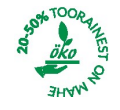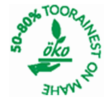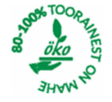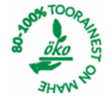Nödvändiga steg
- The first step in developing an organic eco-label for caterers requires establishing levels for the share of organic ingredients in the menu. For example, level 1 = between 20 and 50% of raw materials are organic; level 2 = between 50 and 80% of raw materials are organic; and level 3 = between 80 and 100% of raw materials are organic.
- Create logos for these levels that can be used in communications.
- Decide whether to establish a fee for use of the label. Note that allowing the label to be used for free encourages more widespread use of it, which in turn would make procuring school catering and verifying the conformity of catering contracts easier.
- Decide how the caterer will calculate the percentage of its organic products, e.g. according to quantity or cost.
- Decide when and how the share of organic ingredients are to be checked, e.g. once a month.
Att tänka på
A national or local catering eco-label simplifies the supervision of organic food provision for contracting authorities, because another body verifies compliance with the label. This body could be a state supervisory body, which would then check the compliance of the catering service with the eco-label requirements.





